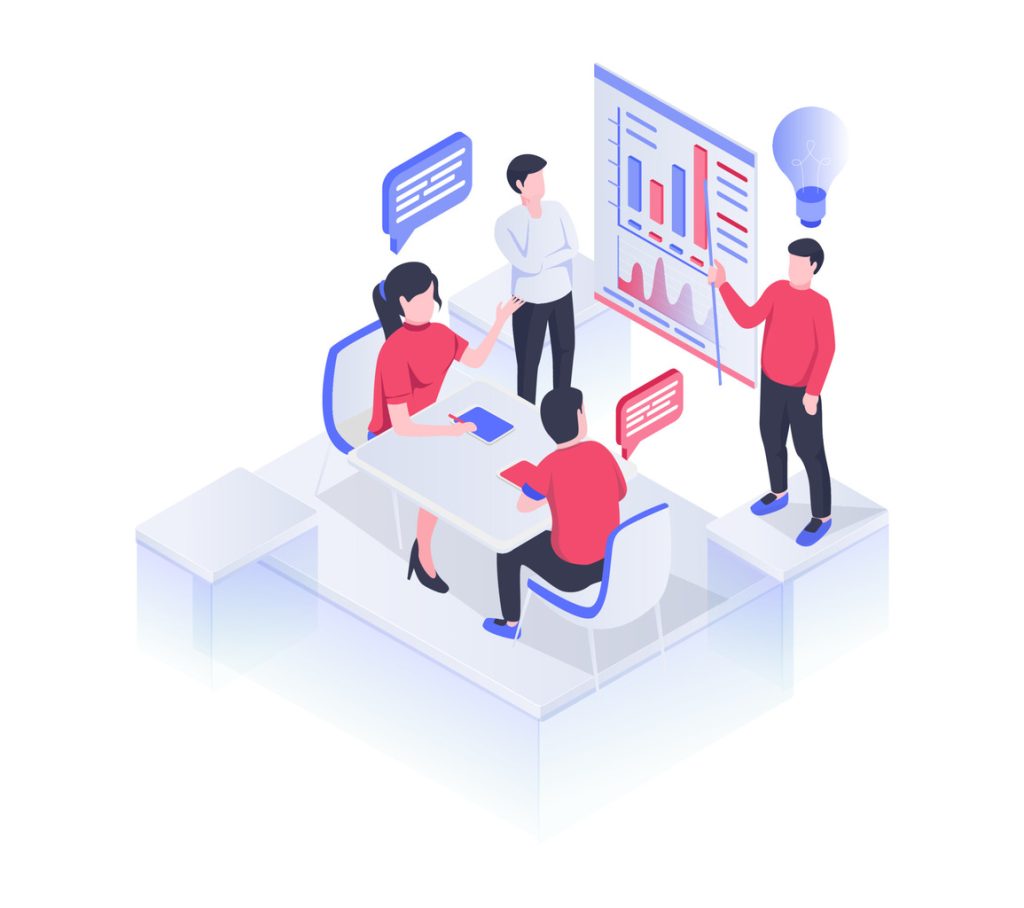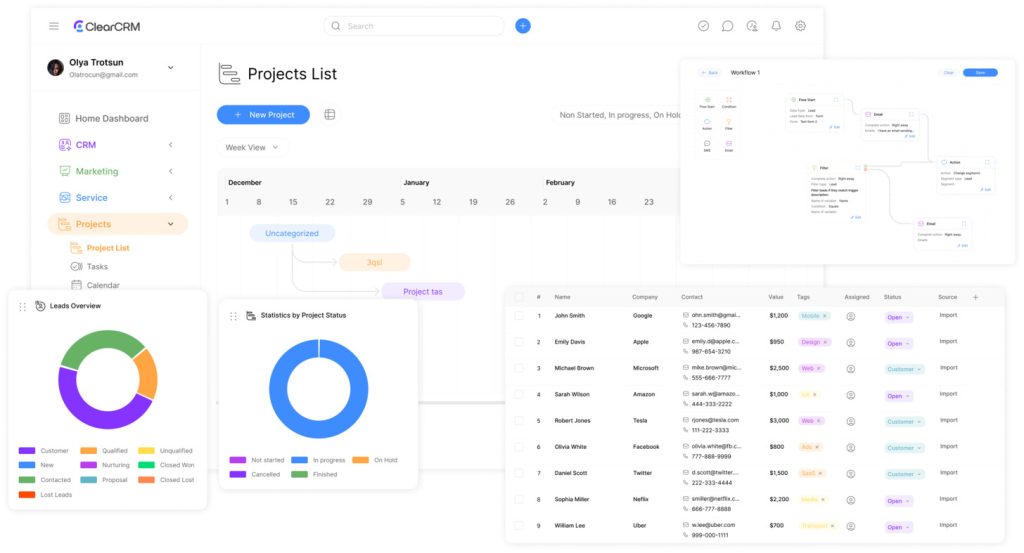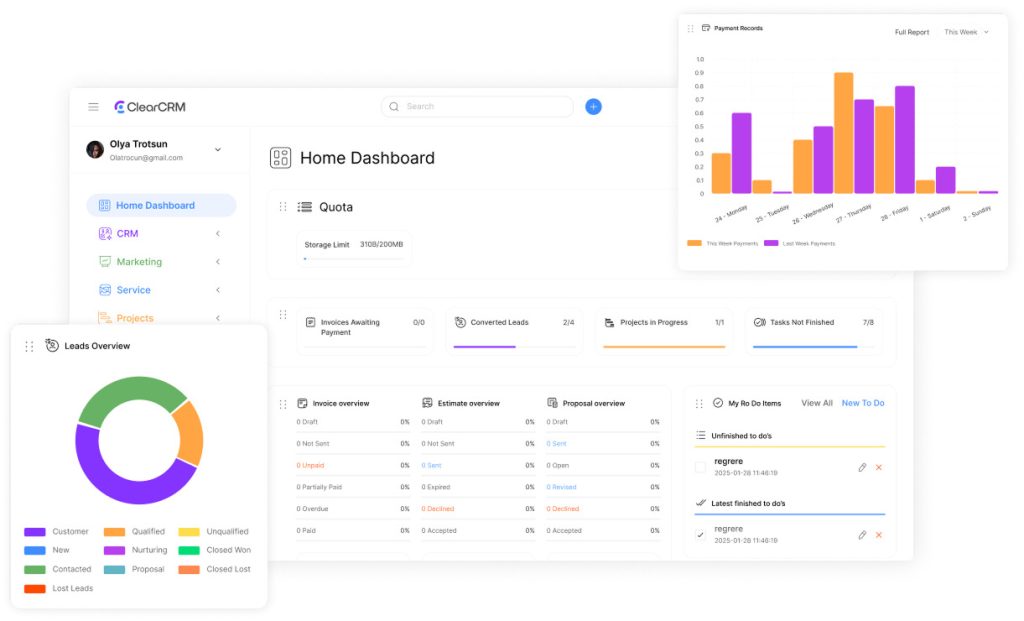The Ultimate Guide to Leveraging Customer Insights

Understanding audience behavior has always been the backbone of successful businesses. Today, this process blends historical feedback methods with cutting-edge analytics, creating a dynamic toolset for growth. Modern strategies now rely on data from surveys, digital interactions, and real-time social signals to paint a complete picture of consumer needs.
Decades ago, companies depended on basic questionnaires or direct conversations to gauge preferences. Now, advanced tools track patterns across platforms, turning raw numbers into actionable strategies. This shift allows teams to identify trends faster and adapt products to meet shifting demands.
Combining market research with social media listening creates a powerful feedback loop. For example, analyzing online conversations helps brands spot service gaps before they escalate. This proactive approach strengthens loyalty and reduces friction in user experiences.
Data-driven decisions also streamline product development. Teams can prioritize features based on verified preferences rather than assumptions. Businesses adopting this model often see faster time-to-market and higher satisfaction rates.
Adopting a customer-centric strategy isn’t optional—it’s essential. By merging traditional insights with digital analytics, organizations build resilience and relevance in competitive markets.
Key Takeaways
- Historical feedback and modern analytics work together to shape effective strategies.
- Social media monitoring helps identify service improvements in real time.
- Integrating market research with digital data reduces guesswork in product design.
- Proactive use of consumer insights boosts operational efficiency and loyalty.
- Businesses that prioritize data-driven decisions gain a measurable competitive edge.
Understanding the Evolution of Customer Insights
Throughout history, adapting to consumer preferences has driven business growth. Early merchants in ancient marketplaces gathered feedback through direct conversations, observing buyer reactions to adjust offerings. This hands-on approach laid the groundwork for understanding audience needs.
From Ancient Marketplaces to Digital Platforms
During the industrial era, structured surveys and focus groups replaced informal exchanges. Companies standardized data collection to refine products at scale. For example, 20th-century manufacturers used mailed questionnaires to identify feature preferences.
Digital platforms revolutionized this process. Social media and online reviews now shape the customer experience by providing instant, unfiltered opinions. A 2023 study found 78% of brands use social listening tools to detect service gaps within hours.
| Era | Method | Outcome |
|---|---|---|
| Ancient | Face-to-face feedback | Immediate product adjustments |
| Industrial | Printed surveys | Mass production optimizations |
| Digital | Social listening | Real-time experience upgrades |
The Rise of Data Science and AI in Customer Insights
Modern tools like AI analyze behavior patterns across the customer journey, predicting needs before they’re voiced. Machine learning algorithms process reviews, purchases, and browsing data to tailor marketing strategies.
For instance, streaming services use viewing histories to recommend content, boosting engagement by 35%. This fusion of data science and traditional research eliminates guesswork, helping teams prioritize features their target audience truly values.
Key Components and Data Sources for Customer Insights

Building a robust strategy starts with diverse data streams. Market research, competitor evaluations, and service interactions form the foundation of actionable knowledge. These elements help teams use insights effectively to address gaps and refine offerings.
Market Research and Competitive Analysis
Comprehensive market studies reveal industry trends and unmet needs. For example, 63% of businesses use insights from competitor pricing strategies to adjust their own models. Pairing this with SWOT analysis highlights opportunities for differentiation.
| Data Source | Purpose | Impact |
|---|---|---|
| Market Research Reports | Identify emerging trends | Guides product roadmaps |
| Competitor Reviews | Benchmark performance | Improves market positioning |
| Social Listening Tools | Track brand sentiment | Enables rapid response |
Service Data and Direct Feedback
Analyzing support tickets uncovers recurring pain points. A 2024 Zendesk report showed companies reducing complaints by 41% after addressing top issues from user feedback. Combining surveys with behavioral analytics creates a balanced view of preferences.
Teams make informed decisions by merging quantitative metrics (e.g., sales figures) with qualitative inputs like interview transcripts. This dual approach minimizes assumptions, ensuring changes align with verified needs. Prioritizing these methods elevates satisfaction while streamlining resource allocation.
The Role of Customer Insights in Strategic Decision-Making
Strategic choices thrive when anchored in verified audience needs. Businesses that prioritize understanding customers reduce guesswork, aligning investments with proven demands. For example, a 2023 McKinsey study found firms using behavioral analytics made decisions 45% faster than competitors relying on intuition.
Modern insights tools aggregate feedback from reviews, purchase histories, and social signals. This diversity in data sources reveals patterns competitors might miss. One apparel brand spotted a 22% surge in demand for sustainable materials by analyzing search trends and forum discussions—a shift traditional surveys hadn’t detected.
“Real-time analytics transformed how we mitigate risks,” notes a retail executive. “We adjust inventory weekly based on live sentiment tracking.”
Balancing quantitative metrics with qualitative inputs sharpens opportunity identification. When a software company noticed recurring complaints about interface complexity, it redesigned its platform using session recordings. User retention jumped 31% within six months.
To embed this approach:
- Map decision points to relevant data sources
- Train teams to interpret behavioral analytics
- Establish feedback loops between departments
Companies adopting these steps often outperform market averages by 18% in agility metrics. The key lies in treating audience intelligence as a living asset—not a static report.
Techniques for Collecting and Analyzing Customer Data

Effective data collection transforms raw information into actionable strategies. Modern businesses blend traditional methods with digital tools to capture nuanced preferences. This approach reveals hidden patterns while maintaining flexibility across industries.
Surveys, Focus Groups, and Online Reviews
Structured surveys remain vital for gathering specific feedback. Email campaigns or in-app pop-ups yield response rates up to 33% when kept under three minutes. Focus groups add depth through moderated discussions—ideal for testing prototypes.
Online reviews offer unfiltered opinions at scale. Platforms like Trustpilot aggregate ratings, highlighting recurring service gaps. A 2024 BrightLocal study found 89% of consumers check reviews before purchasing.
| Method | Best Use Case | Key Benefit |
|---|---|---|
| Surveys | Quantifying preferences | Standardized metrics |
| Focus Groups | Exploring motivations | Detailed context |
| Online Reviews | Identifying pain points | Real-time feedback |
Merging Metrics With Context
Analytics tools like Google Analytics track behavior across websites and apps. Heatmaps from Hotjar show where users linger or abandon forms. These tools process millions of data points to spotlight trends.
Combining numbers with context sharpens accuracy. For example, high cart abandonment rates paired with session recordings might reveal confusing checkout steps. Teams then prioritize fixes that address verified issues.
Brandwatch and SimilarWeb excel at social listening and competitor benchmarking. Such platforms help businesses stay agile—adjusting strategies weekly based on live sentiment shifts.
Leveraging Customer Insights to Enhance Marketing Strategies

Personalized marketing drives growth when fueled by precise audience intelligence. By translating data into targeted campaigns, businesses reduce wasteful ad spend while boosting engagement. This approach transforms generic outreach into meaningful interactions that resonate with specific buyer groups.
Crafting Personalized Campaigns
Market segmentation forms the backbone of effective targeting. Analyzing demographics, purchase habits, and browsing patterns allows teams to group audiences by shared needs. For example, restaurants using CRM tools track diner preferences to send tailored promotions—increasing repeat visits by 29% in one case study.
Product research further sharpens messaging. Teams identify which features matter most through A/B testing and sentiment analysis. A 2024 Gartner report found campaigns based on verified preferences achieved 3x higher conversion rates than untested concepts.
Successful strategies often merge quantitative metrics with creative storytelling. Behavioral data reveals when audiences engage, while surveys explain why. A skincare brand combined these methods, linking hydration trends to product benefits—resulting in a 40% sales lift during seasonal campaigns.
- Prioritize real-time analytics to adapt messaging to shifting trends
- Use dynamic content tools to auto-personalize emails and ads
- Benchmark against competitors to identify untapped niches
Continuous market research remains critical. Quarterly audits of search trends and social conversations help brands anticipate demand spikes. Businesses adopting this proactive model report 22% faster response times to emerging opportunities.
Customer Insights and Product Development
Product innovation thrives when fueled by direct user input. Purchase histories and online reviews reveal patterns that shape product roadmaps. For example, Amazon’s recommendation engine analyzes buying trends to suggest complementary items—a strategy that drives 35% of its revenue.
Using Purchase History and Product Reviews
Transactional data shows what audiences buy, while reviews explain why they choose specific products. A 2024 PowerReviews study found 92% of consumers trust peer evaluations more than branded content. Businesses that analyze these sources spot unmet needs faster.
| Data Source | Key Insight | Product Impact |
|---|---|---|
| Purchase Trends | Identifies feature demand | Guides inventory planning |
| Negative Reviews | Highlights pain points | Triggers design revisions |
| Media Mentions | Reveals emerging trends | Inspires new prototypes |
Driving Innovation Through Feedback
Social media discussions and beta testing groups provide raw material for breakthroughs. LEGO’s Ideas platform lets users submit designs, with popular concepts becoming official sets. This approach cut development time by 40% while boosting launch success rates.
“Beta tester feedback reshaped our app’s navigation within weeks,” says a tech startup CEO. “User retention doubled post-update.”
Iterative development cycles ensure continuous improvement. Brands like Glossier build products through Instagram polls, creating cult favorites like their Milky Jelly Cleanser. Real-time adjustments based on live input keep offerings aligned with shifting preferences.
Integrating Social Media and Behavioral Analytics

Social platforms have become modern focus groups, offering unfiltered access to audience opinions. Combining behavioral data with social listening creates a dynamic system for refining engagement tactics and operational strategies.
Decoding Signals in the Digital Noise
Advanced tools like Brandwatch and Sprout Social scan millions of posts to identify feedback patterns. A 2024 Hootsuite report shows brands using these platforms detect emerging trends 58% faster than competitors relying on traditional surveys.
Effective engagement requires strategic interaction:
- Respond to comments within 4 hours to boost satisfaction rates
- Use polls to crowdsource preferences for product updates
- Host live Q&A sessions to address service concerns publicly
| Tool | Function | Impact |
|---|---|---|
| Talkwalker | Sentiment tracking | 52% faster crisis response |
| Khoros | Engagement analytics | 33% higher click-through rates |
“Real-time social data lets us adjust campaigns hourly,” explains a retail marketing director. “Last quarter, we redirected ad spend based on trending hashtags—ROI jumped 27%.”
Behavioral analytics enhance this approach by linking social activity to on-site actions. For example, users discussing sustainability might prefer eco-friendly checkout options. Chatbots trained on this data resolve 41% more queries without escalation.
To convert observations into action:
- Map social sentiment to specific service protocols
- Align content calendars with trending topics
- Train teams to spot buying signals in casual conversations
Brands combining these methods achieve 19% higher retention than those using isolated strategies. The key lies in treating social platforms as both megaphones and microscopes—amplifying messages while examining audience nuances.
Utilizing Predictive Analytics and Insight Tools

Predictive analytics has reshaped how brands anticipate market shifts. By analyzing historical patterns and real-time signals, businesses forecast behavior with 89% accuracy in key industries. This approach transforms raw data into strategic foresight, aligning offerings with evolving preferences.
Forecasting Customer Behavior
Advanced algorithms process sources like purchase histories and social activity to predict trends. Retailers use these models to stock inventory before seasonal spikes, reducing stockouts by up to 37%. For example, Target’s pregnancy prediction model identifies likely buyers months before birth announcements.
| Method | Data Sources | Accuracy Rate |
|---|---|---|
| Traditional Surveys | Self-reported preferences | 62% |
| Predictive Models | Behavioral + demographic data | 89% |
Emerging tools like CRM automation platforms merge predictive analytics with workflow optimization. These systems trigger personalized follow-ups when users exhibit buying signals, boosting conversions by 21%.
“Our predictive dashboard spots churn risks 30 days earlier than manual reviews,” notes a SaaS company CEO. “Retention rates improved 18% in Q1.”
Blending traditional sources like focus groups with machine learning creates balanced strategies. Netflix combines viewing data with A/B tests to refine recommendations, driving 80% of watched content through its suggestion engine. This hybrid method strengthens brand relevance while minimizing guesswork.
- Prioritize tools offering cross-platform data integration
- Validate predictions through controlled pilot campaigns
- Update models quarterly to reflect market changes
Addressing Challenges in Gathering and Using Customer Insights

Harnessing data effectively requires navigating two major hurdles: information overload and regulatory risks. Companies often struggle to extract value from sprawling datasets while maintaining strict privacy standards.
Overcoming Data Overload
Advanced tools like AI-powered analytics filter noise from critical trends. For example, a retail chain reduced analysis time by 60% using dashboards that prioritize high-impact metrics. Automated systems flag anomalies in real time, letting teams focus on actionable patterns.
Streamlining data pipelines prevents bottlenecks. One e-commerce brand cut processing steps from 12 to 4 by adopting cloud-based aggregation tools. This freed 15 hours weekly for strategic tasks instead of manual sorting.
Ensuring Compliance and Data Privacy
Strict adherence to regulations like GDPR builds trust and avoids penalties. Encryption protocols and access controls protect sensitive information collected across websites. A healthcare provider streamlined compliance by integrating consent management tools into its CRM system.
“Balancing data utility with security isn’t optional—it’s foundational,” notes a fintech compliance officer. “Our audits decreased by 40% after adopting zero-trust architecture.”
Regular staff training minimizes human error risks. Monthly simulations test response protocols for breaches, ensuring readiness. These measures turn compliance from a hurdle into a competitive advantage.
Customer Insights in the Digital Age
The digital era has redefined how companies adapt to shifting preferences. Instant data streams now fuel rapid adjustments across every touchpoint, turning observations into immediate action.
Speed Meets Precision in Modern Analytics
Real-time analytics reshape the journey from discovery to purchase. Brands track interactions across apps, websites, and social platforms simultaneously. A 2024 Forrester study found businesses using live dashboards reduced response times by 68% during service disruptions.
| Approach | Data Latency | Strategic Impact |
|---|---|---|
| Traditional Surveys | 2-4 weeks | Delayed adjustments |
| Live Feedback Tools | 0-2 hours | Same-day fixes |
Agile decisions thrive when teams merge instant surveys with behavioral signals. For example, a restaurant chain revised its menu within 48 hours after noticing a 40% drop in dessert orders via app analytics. “Our dashboard highlights trends before weekly meetings,” explains a retail operations manager. “We pivot campaigns while momentum still exists.”
Continuous improvement relies on three steps:
- Embed feedback buttons at critical journey stages
- Train teams to interpret live experience metrics
- Automate alerts for sudden sentiment shifts
Tools like Google Analytics and Hotjar enable this cycle. One e-commerce brand boosted conversions by 19% after linking checkout abandonment rates to real-time chat support. By treating data as a living pulse—not a historical record—businesses stay aligned with evolving expectations.
Conclusion
Data-driven strategies now define market leadership. By merging audience analytics with operational workflows, businesses unlock precision in targeting and resource allocation. This guide demonstrates how decoding behaviors through advanced tools creates actionable roadmaps for growth.
Integrating these methods across departments turns raw numbers into sales catalysts. Teams aligning product development, marketing, and service with real-time analytics see 35% faster revenue growth than peers relying on intuition.
Continuous monitoring of audience behaviors remains critical. Adaptive strategies thrive when powered by platforms like CRM solutions, which centralize behavioral data for swift decisions. Regular audits of engagement patterns maintain relevance in shifting markets.
To sustain competitive advantage:
- Prioritize analytics training for cross-functional teams
- Automate behavior tracking across digital touchpoints
- Align quarterly objectives with verified audience needs
Forward-thinking organizations treat behavioral intelligence as their compass. The result is accelerated sales cycles, strengthened loyalty, and strategies evolving with audience demands.

